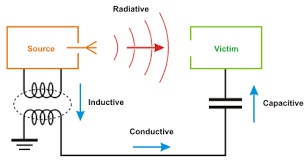FLEX & RIGID-FLEX CIRCUITS
Flex
& Rigid-Flex circuits can be shaped to fit where no other design can. They
are a hybrid of ordinary printed circuit boards and round wire, exhibiting
benefits of each.
In
essence, flexible circuits give you unlimited freedom of packaging geometry
while retaining the precision density and repeatability of printed circuits.
As
a high reliability replacement for wire and wire harness assemblies, flex
circuits provide a significant cost savings with no reduction in performance.
There
are a variety of terminations for flex circuits and we can provide all of these
as standard manufacturing process. Adding connectors and other minor component
assembly is a common practice when producing flex and rigid flex circuits.
· TYPES OF FLEX CIRCUITS
Below
you will find information regarding the different types of flexible circuits
from a single or double sided design to multi-layer technologies, including
rigid flex circuit design specifications.
Single-Layer Flex Circuit
·
IPC 6013 - Type 1
·
One conductive layer,
either bonded between two insulating layers or uncovered on one side.
·
Stiffeners, pins,
connectors, components, are optional.
Double-Sided Flex Circuit
·
IPC 6013, - Type 2
·
Two conductive layers
with an insulating layer between; outer layers may have covers or exposed pads.
·
Plated through-holes
provide connection between layers.
·
Stiffeners, pins,
connectors, components are optional.
Multi-Layer Flex Circuit
·
IPC 6013 - Type 3
·
Three or more flexible
conductive layers with flexible insulating layers between each one; outer
layers may have covers or exposed pads.
·
Plated through-holes
provide connection between layers.
·
Controlled impedance possible.
Rigid-Flex Circuit
·
IPC 6013 - Type 4
·
Two or more conductive
layers with either flexible or rigid insulation material as insulators between
each one; outer layers may have covers or exposed pads.
·
Rigid-flex has
conductors on the rigid layers, which differentiates it from multi-layer
circuits with stiffeners. Plated through-holes extend through both rigid and
flexible layers (with the exception of blind and buried vias). Rigid-flex costs
more than a standard circuit with stiffeners.
FLEX & RIGID-FLEX CIRCUIT BENEFITS
Flex
and Rigid-Flex circuits gives the ability to design your circuitry to fit the
device, instead of building a device to fit the circuit board. They are
designed for the rigors of aerospace, medical and military applications, with
dependable reliability.
Flex
circuits offer multiple advantages for anyone considering to use this
technology in a future project or if you’re trying to decide on re-engineering
your current design. Below you will find some key benefits of using flex and
rigid-flex circuit technology.
Package Size & Weight Reduction
Combination of design freedom, space, weight and component savings can reduce packaging requirements significantly when using flex circuits as compared to other solutions.
- Flexible circuit boards fit where no other solutions can.
- Flexible circuit boards are thin and light weight which enables a substantial packaging size reduction.
- They have the ability to be folded or creased and positioned into the smallest areas makes miniaturization of many devices possible.
- Space requirements can be minimized by applying the freedom of 3D packaging geometry.
- Utilizing a flex circuit solution into your design can offer a substantial weight reduction benefit over using wires and wire harnesses.
- Flexible circuits can be used to replace wiring reduces the errors common in hand wired assemblies
Reliability & Durability
·
Increased reliability by
eliminating interface connections (solder joints, connectors, contact crimps
etc.).
·
The fewer number of
interconnects, the fewer the sources of potential failure.
·
Rigid-Flex technology
which integrates both a flex circuit and a rigid PCB further reduces the number
of interconnects.
·
Flex circuit’s ductility
and low mass will reduce the impact of vibration and shock and improve
performance.
·
The exceptional thermal
stability of polyimide allows the circuit to withstand applications with
extreme heat, as the materials excellent thermal stability provides a better
base for surface mounting than traditional boards. Because the compliant base
film places less stress on soldered joints, thermal mismatch is less likely to
occur.
·
Used extensively in high
reliability military and medical applications.
Cost Savings
·
Thin and flexible
polyimide film requires a much smaller area, reducing the overall finished
assembly packaging size and material requirement costs.
·
Reduced assembly costs
are also seen as fewer parts are needed for the final assembled product.
·
A simplified PCB
assembly processes can reduce assembly errors as the flex circuit can only be
installed one way.
·
Flex circuits also
eliminate wire routing errors; reducing test time, rework, and rejects.
High Temperature Applications
·
Flex circuits materials
(polyimide) dissipate heat at a better rate than other dielectric materials
while providing the added benefits of vastly improved flexibility.
·
Can be exposed to
extreme temperature applications (up to - 200C to 400C).
·
Expansion and
contraction are minimized when using polyimide material.
·
Good chemical resistance
to oils, acids, gases etc.
·
Flex circuits offer
excellent radiation and UV exposure resistance.
High Density Applications
·
Flex material properties
work very well in high speed "Controlled Impedance" designs, which
allow better control of impedances.
·
Flexible circuits allow
for narrow lines giving way to high density device population. Denser device
populations and lighter conductors can be designed into a product, freeing
space for additional product features.
Shielded Applications
·
EMI and RF shielding is
available.
·
Multiple options
including sliver ink, copper layers, and EMI shielding films.
Component / Connector Assembly
·
Flex circuits can accept
any component or connector that can be assembled to a rigid PCB design.
·
Integrated ZIF contacts
provide simple modular interfaces to the system environment.
·
Additional options are
available such as, ZIF Connectors, crimped contacts, direct solder to PCB, etc.
Thanks,
If you are liking my article.. please share it..
Enjoy reading
Ruby


Comments
Post a Comment